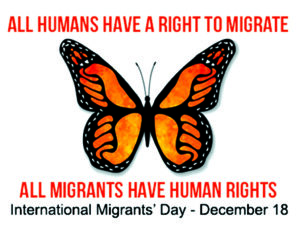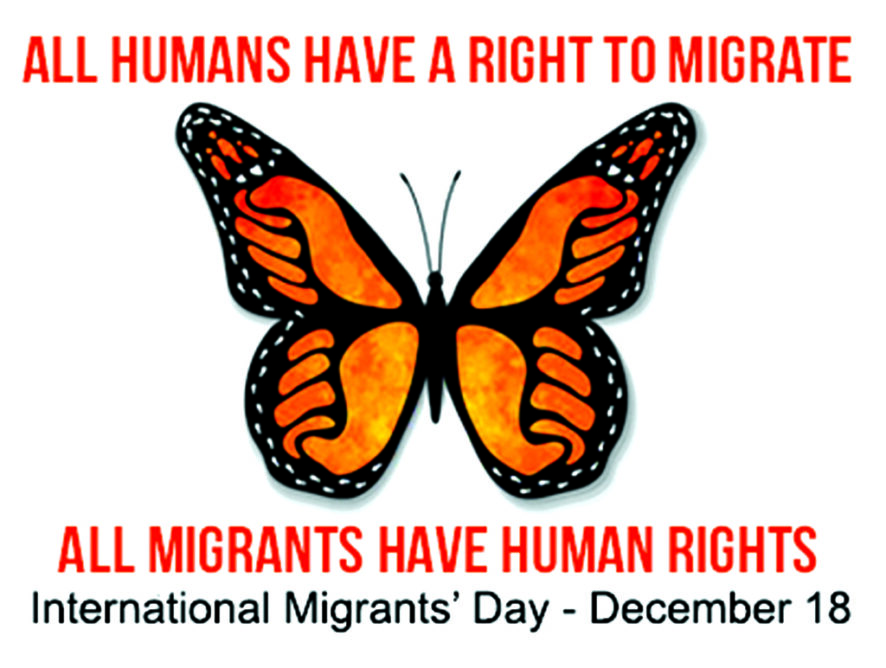On the 18th of this month is the International Migrants Day (IMD). On 4 December 2000, the United Nations General Assembly, proclaimed December 18 as the International Migrants Day. The year before that, in 1990, the Assembly adopted the International Convention on the Protection of the Rights of All Migrant Workers and Members of Their Families. There has been a massive increase of international migrants from an estimated 175 million in 2000 to 244 million persons in 2015. They are situated in different parts of the world mainly in Europe and in Asia. According to the UN statistics, one of every ten migrants is under the age of 15.
Prior to the commemoration of IMD, Canada’s Immigration Minister, Ahmed Hussen made an announcement. He said “After diligently providing care for Canadians, they may soon be in the company of their own loved ones, together in Canada.” Immigration, Refugee and Citizenship Canada (IRCC) says it will have the backlog of permanent residence applications through the old Live-in Caregiver Program (LCP) largely cleared by the end of 2018. “The commitments the government has made today will mean that many Live-in Caregiver Program applicants who have faced long delays and family separation may soon reach their goal of permanent residence,” Minister Hussen said.
 Many applicants from the old Live-in Caregiver Program were stuck of waiting for their permanent residency for year. Lydia a nanny and a former live-in caregiver said, “I’m still waiting for my PR status. It has been seven years since I applied”. Many like Lydia have been waiting to be reunited with their families. “I haven’t seen my family for so long. It has been 10 years in total. I was a caregiver under the LCP program for 3 years and then the wait of more than 7 years. My daughter that I left when she was 10 years old is an adult now” she added. The new announcement is a breath of fresh air for those that are waiting.
Many applicants from the old Live-in Caregiver Program were stuck of waiting for their permanent residency for year. Lydia a nanny and a former live-in caregiver said, “I’m still waiting for my PR status. It has been seven years since I applied”. Many like Lydia have been waiting to be reunited with their families. “I haven’t seen my family for so long. It has been 10 years in total. I was a caregiver under the LCP program for 3 years and then the wait of more than 7 years. My daughter that I left when she was 10 years old is an adult now” she added. The new announcement is a breath of fresh air for those that are waiting.
The old LCP was now replaced with the Caregiver program. There were three fundamental differences from the old in applying for permanent residency. First is the removal of the queue. In the old program, once you finished the 2-year work or 3900 hours you can immediately apply for PR and get an open work permit. Now there are many requirements that an applicant needed to complete. Second is the imposition of a cap of 5,500 that will be given PR. These are divided into 2 streams” Care for children (2,750) and High medical needs (2750). This means that many that will apply will be refused once it’s over the cap. It is similar to a lottery system. It will make caregivers compete amongst each other. And the last is the “live out” option. In the new program, caregivers will be made to choose to live out. While this sounds good and progressive, many employers do not hire a live out nanny. They wanted to access care for their children or high medical needs relatives 24/7. This force the nanny to live in, as that’s the only work being made available to them.
The announcement by the Canada Immigration Minister was made because of the massive pressure from advocates for years. However it still fall short of providing permanent residency to the workers that are needed in the country.
In the Province of Alberta, there too have made important immigration announcement. On October 20. The Minister of Labour Hon. Christina Gray announced the changes to the Alberta Immigrant Nominee Program (AINP). The changes will take effect on January 2018. The changes include the consolidation of all categories in a single stream with one set of standardized eligibility criteria. According to Hon. Gray, the new AINP will become “simpler for applicants, more efficient for government and more responsive to Alberta’s emerging labour-market demands”. She said “These changes will simplify processes, reduce wait times and make it more fair for applicants across all sectors to apply for permanent residency in Alberta”. In a statement made by Migrante Alberta, under the renewed AINP, many migrants that are already here will not be able to meet the eligibility requirements. The changes unfortunately shadows the discriminatory federal immigration program, where the government cherry picks “good migrants” from “bad migrants”, from those who are highly skilled and can afford to stay and those who are low skilled and are meant to be temporary. They criticize the NDP government of not following through their commitment to migrant’s rights. “The current changes do not reflect the values and attitude that the New Democratic Party has promoted in the past,” Migrante said. “This change is a two step back in addressing the issues of migrants that are already here in Alberta. We are hoping the Minister of Labour, Hon. Christina Gray will have a second look into the changes and see that migrants who are already here, regardless of their skill levels, have contributed and will continue to contribute to the economy of Alberta. They will be part of building the province towards a better place to live,” they added.
Looking at the bigger picture, Labour mobility is very much at the core of industrialization with continuing internal migration from countryside to city and from one region to another.
Internationally, the industrialized countries of the world thrive on the backs of migrant labour. According to Sonny Africa, director of research at the Philippine economic think-tank, IBON, “One of the main thrusts of globalization since the 1980s has been to expand the global stock of cheap labour.”
Migrante International (MI), a grassroots organization of migrants from the Philippines, takes a dual approach to its work with migrant workers. “On one hand, we defend the rights and welfare of our Filipino migrant brothers and sisters,” said Tess Agustin, a spokesperson for Migrante Canada, the Canadian chapter of MI. “On the other hand, we also see ourselves as part of the struggle to change the situation in the Philippines, so that forced migration will no longer be a dominant feature in our society. The key is genuine land reform, national industrialization and development for and by the people that creates real jobs and true democracy at home. Only then can migration be a choice, rather than the only way to a decent life for working Filipinos.”
On the 17th anniversary of the declaration of the International Migrants Day, Do we and most Canadians want a two-tiered society, one made up of citizens with full rights and another under class of temporary who do not enjoy even basic rights? All of this while Canadian society benefits from their labour and indeed from their payments into a social service system that they will never benefit from. I’m sure that most if not all freedom loving Canadian will say “NO!”






